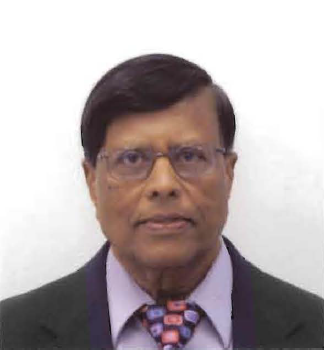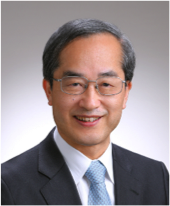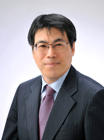General Lectures
General Lecture 1 (11:00-12:00, Wednesday, August 1, 2018)
Mathematics, Physics, Engineering, and Electromagnetics
Speaker: Weng Cho Chew, Purdue University, USA
Chaired by Yury V. Shestopalov, University of Gavle, Sweden
Abstract
In this lecture, we will discuss mathematics issues that commonly emerge in solving electromagnetics and engineering problems. Approximation methods, convergence of approximation methods, existence of solutions, stability of time-stepping methods are often encountered. The understanding of linear vector spaces, such as Hilbert spaces, and Sobolev spaces becomes important in understanding the underlying behaviors of many approximation or numerical methods.
Due to the advent of computers, fast solution methods have been of interest to many researchers. Hence, matrix or operator factorization becomes an important topic of research. Many of the modern fast methods can be thought of matrix or operator factorization techniques. Acceleration of convergence through multi-level multi-grid also becomes the prerogatives of many researchers.
In addition, the use of differential geometry or exterior calculus has been connected to electromagnetics for many years. But recently, a discrete version of exterior calculus has been developed. It seems that this exterior calculus is a superset theory of classical calculus.
In physics, many theories are postulated instead of been derived. For instance, quantum postulates give rise to quantum theory that is a superset theory that describes the world from a new perspective. It will be good for mathematicians to investigate if all physical theories have superset theories. They can lead to a richer description of the world.
Also, there are many mathematical theories that are developed independently of physics and engineering applications. Examples of these are complex variable theory, topology, Lie algebra. The use of topology concepts like Chern number is replete in many literatures on topological insulators.
It will be important that bridges be built between mathematics, physics, engineering, and electromagnetics so that this set of knowledge permeates for real-world applications more readily.
Profile
 W.C. Chew received all his degrees from MIT. His research interests are in wave physics, specializing in fast algorithms for multiple scattering imaging and computational electromagnetics in the last 30 years. His recent research interest is in combining quantum theory with electromagnetics, and differential geometry with computational electromagnetics. After MIT, he joined Schlumberger-Doll Research in 1981. In 1985, he joined U Illinois Urbana-Champaign, was then the director of the Electromagnetics Lab from 1995-2007. During 2000-2005, he was the Founder Professor, 2005-2009 the YT Lo Chair Professor, and 2013-2017 the Fisher Distinguished Professor. During 2007-2011, he was the Dean of Engineering at The University of Hong Kong. He joined Purdue U in August 2017 as a Distinguished Professor. He has co-authored three books, many lecture notes, over 400 journal papers, and over 600 conference papers. He is a fellow of various societies, and an ISI highly cited author. In 2000, he received the IEEE Graduate Teaching Awar, in 2008, he received the IEEE AP-S CT Tai Distinguished Educator Award, in 2013, elected to the National Academy of Engineering, and in 2015 received the ACES Computational Electromagnetics Award. He received the 2017 IEEE Electromagnetics Award. He now is the 2018 IEEE AP-S President.
W.C. Chew received all his degrees from MIT. His research interests are in wave physics, specializing in fast algorithms for multiple scattering imaging and computational electromagnetics in the last 30 years. His recent research interest is in combining quantum theory with electromagnetics, and differential geometry with computational electromagnetics. After MIT, he joined Schlumberger-Doll Research in 1981. In 1985, he joined U Illinois Urbana-Champaign, was then the director of the Electromagnetics Lab from 1995-2007. During 2000-2005, he was the Founder Professor, 2005-2009 the YT Lo Chair Professor, and 2013-2017 the Fisher Distinguished Professor. During 2007-2011, he was the Dean of Engineering at The University of Hong Kong. He joined Purdue U in August 2017 as a Distinguished Professor. He has co-authored three books, many lecture notes, over 400 journal papers, and over 600 conference papers. He is a fellow of various societies, and an ISI highly cited author. In 2000, he received the IEEE Graduate Teaching Awar, in 2008, he received the IEEE AP-S CT Tai Distinguished Educator Award, in 2013, elected to the National Academy of Engineering, and in 2015 received the ACES Computational Electromagnetics Award. He received the 2017 IEEE Electromagnetics Award. He now is the 2018 IEEE AP-S President.
General Lecture 2 (11:00-12:00, Thursday, August 2, 2018)
Challenges in Metamaterial and Metasurfaces Design for Practical Antenna Applications
Speaker: Raj Mittra, University of Central Florida, USA
Chaired by Ari Sihvola, Aalto University, Finland
Abstract
Metamaterials (MTMs) were introduced to the EM world by Veselago in a seminal paper back the 60’s, in which he argued that materials with DNG (double-negative) characteristics, whose e and m are both negative, would exhibit exotic properties such as subwavelength resolution, when used in devices such as lenses. Since then other interesting properties of MTMs have been identified, and their applications to cloaking, performance enhancement of small antennas, and related areas, have been proposed. More recently, there has been considerable interest in the topic of Metasurfaces (MTSs), as opposed to volume-type materials, that have been employed to control the propagation of EM waves with applications to communication antennas.
Despite a flood of publications on MTMs and related topics—literally thousands during the last 10 years—the number of real-world applications in which MTMs and MTSs have been utilized have been rather limited. The primary reason for this is the lack of availability of the materials needed to fabricate devices such as those that reduce the size of antennas without compromising their performance in terms of gain, bandwidth, and efficiency, for instance, or shrouds (cloaks) that suppress the electromagnetic scattering from radar targets, to name just a few. A similar situation arises when one attempts to design an antenna, or a similar device, using Transformation Optics (TO), a relatively new concept which was recently introduced by Pendry, among others. In this approach, the transformation of one coordinate system to another is used to modify the geometry of an antenna, without altering its performance, by replacing the original material properties with new ones that can be rigorously determined by applying the principles of TO to Maxwell’s equations. An example of such a device is a flat Luneburg lens which is derived by transforming the conventional spherical Luneburg lens, to render it easier to fabricate. The caveat is that the TO algorithm calls for e and m materials that are not available naturally, e.g., MTMs. The same is also true for a wide variety of other devices, such as flat GRIN (graded index) lenses and Reflectarrays (RAs), which require materials that are unavailable off-the-shelf and, hence, must be synthesized artificially.
In light of this background on MTMs, this presentation will focus on the topic of artificial synthesis of materials with real-world applications in mind. We will review the different strategies that have been proposed, will identify the ones that have been successfully implemented, provide several practical examples of the same, and go on to discuss the challenges that still need to be met--not the least of which is cost-effective fabrication--to satisfy the ever-increasing demands posed by emerging technologies, such as IoT and 5G.
The topic of Additive Manufacturing for low-cost fabrication of MTMs also being pursued a by several groups around the world will be covered, and some issues particularly related to this topic will be examined.
Profile
 Raj Mittra is a Professor in the Department of Electrical Engineering & Computer Science department of the University of Central Florida in Orlando, FL., where he is the Director of the Electromagnetic Communication Laboratory. Prior to joining the University of Central Florida, he worked at Penn State as a Professor in the Electrical and Computer Engineering from 1996 through June, 2015. He was a Professor in the Electrical and Computer Engineering at the University of Illinois in Urbana Champaign from 1957 through 1996, when he moved to the Penn State University. Currently, he also holds the position of Hi-Ci Professor at King Abdulaziz University in Saudi Arabia.
Raj Mittra is a Professor in the Department of Electrical Engineering & Computer Science department of the University of Central Florida in Orlando, FL., where he is the Director of the Electromagnetic Communication Laboratory. Prior to joining the University of Central Florida, he worked at Penn State as a Professor in the Electrical and Computer Engineering from 1996 through June, 2015. He was a Professor in the Electrical and Computer Engineering at the University of Illinois in Urbana Champaign from 1957 through 1996, when he moved to the Penn State University. Currently, he also holds the position of Hi-Ci Professor at King Abdulaziz University in Saudi Arabia.
He is a Life Fellow of the IEEE, a Past-President of AP-S, and he has served as the Editor of the Transactions of the Antennas and Propagation Society. He won the Guggenheim Fellowship Award in 1965, the IEEE Centennial Medal in 1984, and the IEEE Millennium medal in 2000. Other honors include the IEEE/AP-S Distinguished Achievement Award in 2002, the Chen-To Tai Education Award in 2004 and the IEEE Electromagnetics Award in 2006, and the IEEE James H. Mulligan Award in 2011.
Recently he founded the e-Journal FERMAT (www.e-fermat.org) and has been serving as the co-editor-in-chief of the same. Dr. Mittra is a Principal Scientist and President of RM Associates, a consulting company founded in 1980, which provides services to industrial and governmental organizations, both in the U.S. and abroad.
General Lecture 3 (11:00-12:00, Friday, August 3, 2018)
Advances in Quantum Dot Photonics
Speaker: Yasuhiko Arakawa, The University of Tokyo, Japan
Chaired by Tadao Nagatsuma, Osaka University, Japan
Abstract
Since the first proposal of the concept of the quantum dot in 1982, the quantum dots have been intensively studied for both fundamental solid-state physics and advanced device applications. Fully discretizing the energy levels of electrons by quantum dots has enabled the realization of high performance quantum lasers, high-sensitivity quantum dot infrared detectors, and quantum information devices such as single photon sources. Quantum dots can be applied to solar cells with a forecasted conversion efficiency over 75% for the future sustainable renewable energy system. Moreover, embedding a single quantum dot inside the photonic nanocavity provides a new platform for studying solid-state cavity quantum electronics (cavity-QED).
In this lecture, we overview recent progress in quantum dot technology, including practical implementation of quantum dot lasers and demonstration of single photon sources operating above room temperature. Moreover, advances in quantum dot cavity-QED and prospects of the future quantum dot photonics are also discussed.
Profile
 Yasuhiko Arakawa received his PhD degree in Electronics and Electrical Engineering from the University of Tokyo in 1980. He joined the University of Tokyo as an assistant professor and became a full professor at the University of Tokyo in 1993. He is now Professor and the Director of the Institute for Nano Quantum Information Electronics, the University of Tokyo. He served to the International Commission for Optics (ICO) as the President and was elected as a Foreign Member of US National Academy of Engineering (NAE). He has received numerous awards, including Leo Esaki Award (2004), IEEE/LEOS William Streifer Award (2006), Fujiwara Award (2007), IEEE David Sarnoff Award (2009), Medal with Purple Ribbon (2009), C&C Prize (2010), Heinrich Welker Award (2011), OSA Nick Holonyak Jr. Award (2011), and Japan Academy Prize (2017). He is a Life Fellow of IEEE and a Fellow of OSA.
Yasuhiko Arakawa received his PhD degree in Electronics and Electrical Engineering from the University of Tokyo in 1980. He joined the University of Tokyo as an assistant professor and became a full professor at the University of Tokyo in 1993. He is now Professor and the Director of the Institute for Nano Quantum Information Electronics, the University of Tokyo. He served to the International Commission for Optics (ICO) as the President and was elected as a Foreign Member of US National Academy of Engineering (NAE). He has received numerous awards, including Leo Esaki Award (2004), IEEE/LEOS William Streifer Award (2006), Fujiwara Award (2007), IEEE David Sarnoff Award (2009), Medal with Purple Ribbon (2009), C&C Prize (2010), Heinrich Welker Award (2011), OSA Nick Holonyak Jr. Award (2011), and Japan Academy Prize (2017). He is a Life Fellow of IEEE and a Fellow of OSA.
General Lecture 4 (11:00-12:00, Saturday, August 4, 2018)
Electromagnetic Wave Theory for Wireless Power Transfer
Speaker: Naoki Shinohara, Kyoto University, Japan
Chaired by Satoshi Yagitani, Kanazawa University, Japan
Abstract
A wireless power transfer (WPT) technology is considered as one of game changing technologies. The WPT technology is basically based on the same theory for a wireless communication. We use an antenna for the WPT. We use a wave circuit for the WPT. Only the difference of the technologies between for the WPT and for the wireless communication is a view point of an efficiency of the power transmission between the antennas and of the power conversion at the circuit. For example, we put a transmitting antenna and a receiving antenna at distance in which a mutual coupling between the transmitting and the receiving antenna occurs to increase a beam efficiency. When the mutual coupling between the transmitting and the receiving antenna is very strong, it is called inductive/capacitive coupling WPT. In that distance, a magnetic field or an electric field is used as a carrier of the power. When the mutual coupling is weak, it is called a resonance coupling WPT and an evanescent mode wave is used as the carrier of the power. When the mutual coupling is very weak or negligible, it is called a WPT via electromagnetic wave in a radiative near field. In that distance, we cannot apply Friis transmission equation because we cannot assume a plane wave. All phenomena will occur with the same antenna. Now there are various kind of WPT commercial applications, e.g. a wireless charger of a smart phone with an inductive coupling WPT, a resonance coupling wireless charger of an electric vehicle, an RF-ID via microwave power, and an IoT devices whose power is supplied by an energy harvesting from an ambient radio wave. They seem to be different WPT systems. But we can explain all WPT systems via the same electromagnetic theory.
In this talk, first of all, current R&D status of the WPT in the world will be described and hopeful future of the WPT as a game changing technology will be described. Next total electromagnetic theory for the WPT will be explained. New circuit theory to increase a power conversion efficiency will also described. This talk will give audiences total knowledge of the WPT theory and technologies.
Profile
 Naoki Shinohara received the B.E. degree in electronic engineering, the M.E. and Ph.D (Eng.) degrees in electrical engineering from Kyoto University, Japan, in 1991, 1993 and 1996, respectively. He was a research associate in Kyoto University from 1996. From 2010, he has been a professor in Kyoto University. He has been engaged in research on Solar Power Station/Satellite and Microwave Power Transmission system. He is IEEE MTT-S Technical Committee 26 (Wireless Power Transfer and Conversion) chair, IEEE MTT-S Distinguish Microwave Lecturer (DML), IEEE Wireless Power Transfer Conference advisory committee member, URSI Commission D vice chair, international journal of Wireless Power Transfer (Cambridge Press) executive editor, first chair and technical committee member on IEICE Wireless Power Transfer, Japan Society of Electromagnetic Wave Energy Applications (JEMEA) president, Space Solar Power Systems Society board member, Wireless Power Transfer Consortium for Practical Applications (WiPoT) chair, and Wireless Power Management Consortium (WPMc) chair.
Naoki Shinohara received the B.E. degree in electronic engineering, the M.E. and Ph.D (Eng.) degrees in electrical engineering from Kyoto University, Japan, in 1991, 1993 and 1996, respectively. He was a research associate in Kyoto University from 1996. From 2010, he has been a professor in Kyoto University. He has been engaged in research on Solar Power Station/Satellite and Microwave Power Transmission system. He is IEEE MTT-S Technical Committee 26 (Wireless Power Transfer and Conversion) chair, IEEE MTT-S Distinguish Microwave Lecturer (DML), IEEE Wireless Power Transfer Conference advisory committee member, URSI Commission D vice chair, international journal of Wireless Power Transfer (Cambridge Press) executive editor, first chair and technical committee member on IEICE Wireless Power Transfer, Japan Society of Electromagnetic Wave Energy Applications (JEMEA) president, Space Solar Power Systems Society board member, Wireless Power Transfer Consortium for Practical Applications (WiPoT) chair, and Wireless Power Management Consortium (WPMc) chair.